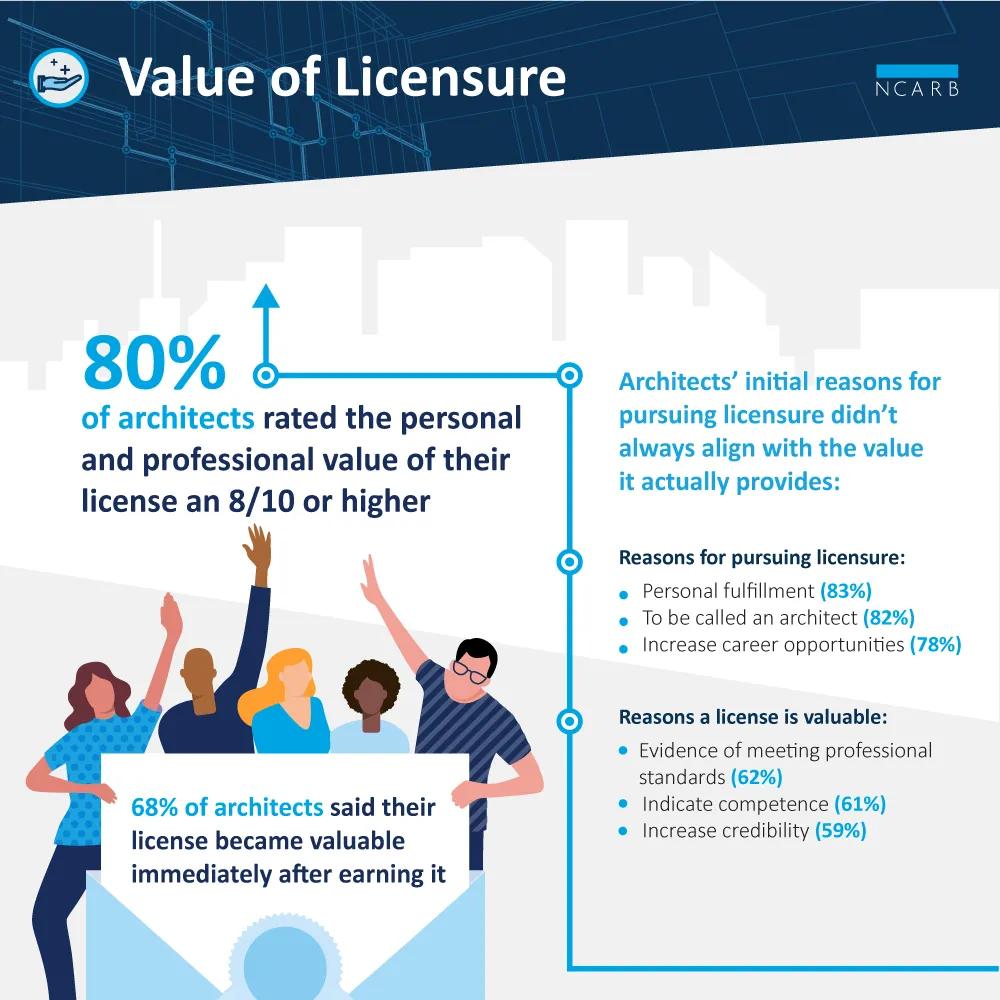Earning a license to practice architecture can be a challenging, time-consuming, and expensive process—especially considering licensed and unlicensed individuals often work side by side in the architecture industry. To better understand how, why, and when a license is valuable to architects, we surveyed thousands of architects and other practitioners as part of our 2022 Analysis of Practice study.

Personal Vs. Professional Value
Architects often cite both personal and professional reasons for getting licensed—for example, the ability to call themselves an architect or the ability to start their own firm. Most respondents rated both the personal and professional value of licensure as an 8/10 or higher. While respondents rated the overall personal value of a license slightly higher than the professional value, they also selected primarily professional reasons when asked why a license provided value:
- To have evidence that I meet professional standards
- To indicate my competence to protect the health, safety, and welfare of the public
- To increase my credibility
- To increase my career advancement/professional opportunities
- Because clients value licensed professionals
When Is a License Most Valuable?
The Analysis of Practice also explored whether licenses were more valuable at certain points in an architect’s career, or for architects at certain firm sizes or locations. Most respondents (67%) agreed that their license became valuable immediately after receiving it, with only 16% of respondents indicating that their license didn’t provide much value within the first three years of licensure.
Additionally, practitioners think that the value of licensure is universal, regardless of workplace size, culture, or location.
Reasons Not to Pursue Licensure
Practitioners highlighted several areas of work where having a license was unnecessary, including project management, contract negotiation, and contract administration. Respondents who chose not to pursue licensure commonly cited the time, expense, and equity of the licensure process as their reasons not to pursue licensure. They also noted that some firms will hire specialists regardless of their licensure status.
Demographic Differences
Overall, Analysis of Practice respondents were largely in agreement on questions related to the value of licensure, regardless of demographic group. Some differences included:
- Respondents who were older, had been licensed longer, and had more experience in the profession were more likely to indicate that their license was valuable because it allowed them to sign and seal documents.
- Recently licensed architects were more likely to indicate that the value of a license depended on workplace size.
- While most respondents decided on architecture as a career path before graduating high school, Asian respondents tended to select architecture as a career path later than respondents of other racial/ethnic identities.
What’s Next?
Over the coming years, NCARB will be exploring the next iteration of the path to licensure. Findings from the Analysis of Practice will inform what the licensure process will look like in the years ahead.
About the Analysis of Practice
In 2022, over 19,000 individuals across the architecture, engineering, and construction (AEC) industry participated in NCARB’s once-in-a-decade Analysis of Practice study. Through a series of short questionnaires, focus groups, a final extensive survey, and more, NCARB gathered key insights about the field of architecture that will help shape the licensing model of the future.
Results from the study will help us better understand the ecosystem of architectural practice and may lead to changes to NCARB’s national licensing programs and standards of the future.


